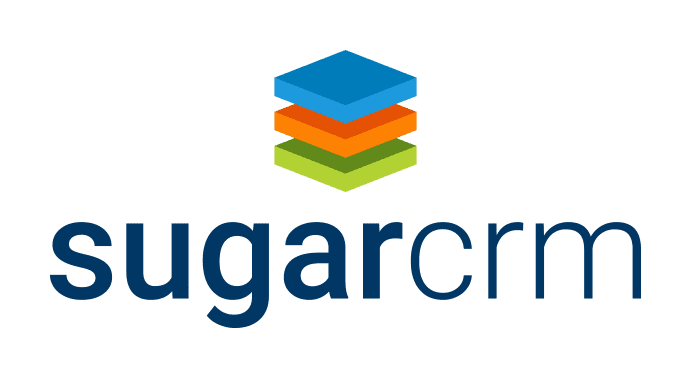As private, shared, and hybrid cloud solutions continue to grab attention globally, it is becoming increasingly essential to understand the technological infrastructure of cloud solutions and how they can affect business decisions and resource utilization.
Cloud computing is a subset of cloud networking. Whereas a cloud network is a network of clouds, cloud computing uses the cloud to store and process data.
Gaining visibility into business network traffic becomes more challenging as businesses adopt more cloud technologies and cloud networking configurations. So, building on that, understanding the contrasts between cloud networking and cloud computing is imperative because they have different processes and goals.
Let’s make it a bit more clear.
What is Cloud Computing?
Cloud computing refers to all the cloud services provided to ensure that all cloud applications operate correctly. Because of their scalability, security, and reliability, the global cloud computing market is expected to reach $1240.9 billion by 2027.
What does that mean for businesses? Often cloud service providers lease their resources to companies or individuals for using, hosting, or storing applications over the internet.
Those organizations shift their enterprise workload from traditional in-house data centers to a cloud service provider’s data center. This takes away the organization’s direct control over the computing infrastructure its workload is running on.
Nonetheless, businesses can choose between different cloud computing service models to control the visibility they have in their workloads.
These include:
- Software as a Service (SaaS)
- Platform as a Service (PaaS)
- Infrastructure as a Service (IaaS)
- Hardware as a Service (Haas)
- Network as a Service (NaaS)
What is Cloud Networking?
In cloud networking, companies rent network resources, like firewalls, routers, adapters, and load balancers, from a third-party cloud provider to build an infrastructure that allows the organization to exchange data across an entire organization seamlessly.
Typically, the company shifts its data connectivity and network management to an external cloud infrastructure where network traffic and resources are controlled but designs, configures, and manages the rented network resources on the cloud based on their unique infrastructure and needs to facilitate data sharing.
The organization’s resources and network is available on-demand as long as there is an internet connection, whether using devices through a cloud service provider or on-premises. An example of cloud networking includes using a cloud-based network controller to direct WAN into a software-designed WAN or to manage the WLANs in an organization.
This includes virtualized networking components such as virtual switches and software-defined networking (SDN) tools that allow network administrators to manage and configure their cloud-based networks using code and automation.
Cloud networking also includes the use of cloud-based services, such as Amazon Web Services (AWS) Virtual Private Cloud (VPC) and Google Cloud Virtual Private Network (VPN), to create secure, private connections between on-premises networks and cloud environments.
There are also different cloud networks:
- Cloud-based networks – both software and hardware is rented from the cloud service provider
- Cloud-enabled networks – this hybrid networking model allows an organization to use the cloud to manage its onsite network infrastructure
- Multi-cloud networking – has advanced capabilities and is integrated with public cloud providers giving it easier accessibility across on-premises environments and multiple clouds
Cloud Networking vs. Cloud Computing
At its core, cloud computing refers to the intricacies of applications running, while cloud networking is about the connectivity of cloud applications and how they are managed and delivered.
That is, cloud computing is the delivery of computing resources and services over the internet, while cloud networking is the infrastructure and technologies used to connect those resources and services. Cloud networking is a cloud computing subset.
The Importance of Understanding the Difference
Cloud computing and cloud networking serve different purposes. Cloud computing provides the services and infrastructure, while cloud networking allows the connectivity and access of cloud resources.
And by understanding this distinction, companies can easily communicate, make decisions, and evaluate vendor solutions, among other reasons. For instance, a business can implement hybrid cloud deployments for on-premises and cloud-based resources and services by understanding cloud networking.
As a result, it gets easier to take advantage of the scalability and flexibility of cloud computing without giving up total control of some applications and sensitive data. This is imperative since the primary idea behind cloud computing is to allow users to use cloud resources and services without giving thought to the underlying infrastructure.
However, any business must understand the capabilities and limitations of cloud solutions to ensure that they meet their objectives without constraints. This is where understanding cloud networking comes in.
Cloud Solutions are Rapidly Growing
And consequently, the need to effectively understand and communicate cloud terminologies to customers, partners, and vendors is also growing. Think about it: in 2021, cloud infrastructure services generated $178 billion in revenue, and by the second quarter of 2022, cloud infrastructure spending had increased by $62.3 billion, making this the highest annual growth rate since 2018.
An Important Distinction
That’s why with more spending shifting from traditional to cloud solutions, the distinction between cloud networking and cloud computing is vital to a modern business. Remember, cloud computing refers to delivering computing resources, such as storage and processing power, over the internet as a service.
On the other hand, cloud networking refers to the use of cloud-based services for networking and communication, such as virtual private networks and cloud-based firewalls.
Together, these technologies enable businesses to access powerful computing resources and networking capabilities without investing in and maintaining expensive physical infrastructure. This can help companies to become more agile, cost-effective, and responsive to changing market conditions.
FAQs
What is cloud computing?
This uses remote servers hosted in the cloud (or over the internet) to process, manage, and store data. This is a shift from the traditional use of personal computers and local servers for storage.
What is cloud networking?
When an organization hosts some or all of its network capabilities in a private or public cloud platform where everything is available on demand and managed by the service provider or in-house, we refer to such a system as cloud networking.
What is the difference between cloud computing and cloud networking?
Cloud computing is a blanket term for all cloud hosting, storage, and management services over the internet. Cloud networking is a subset of cloud computing that focuses on building and managing cloud network resources.

